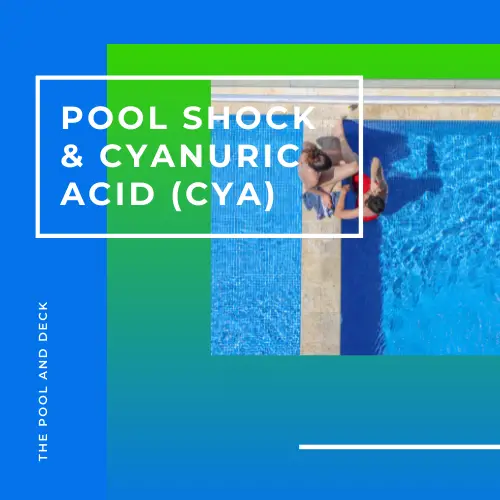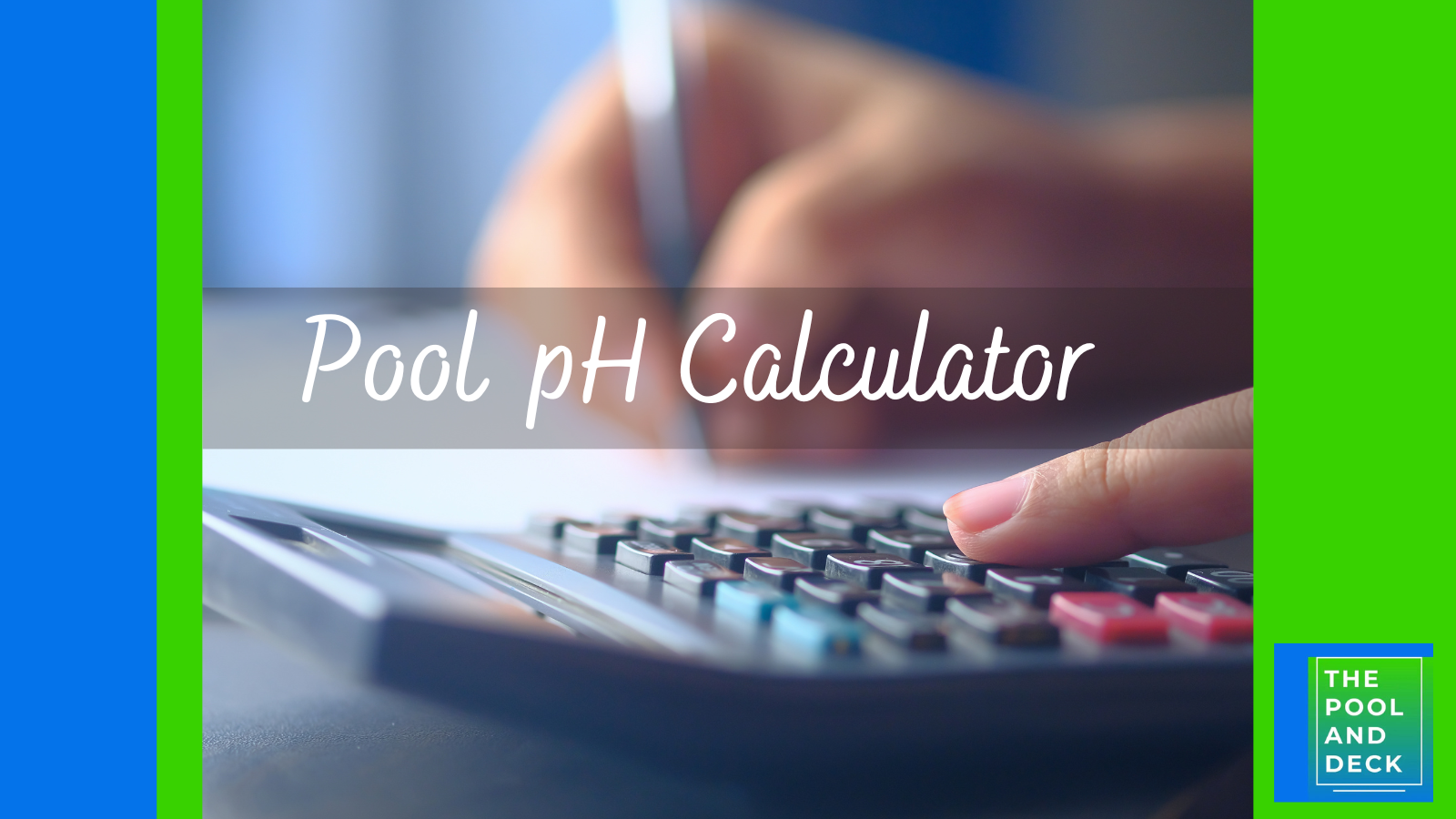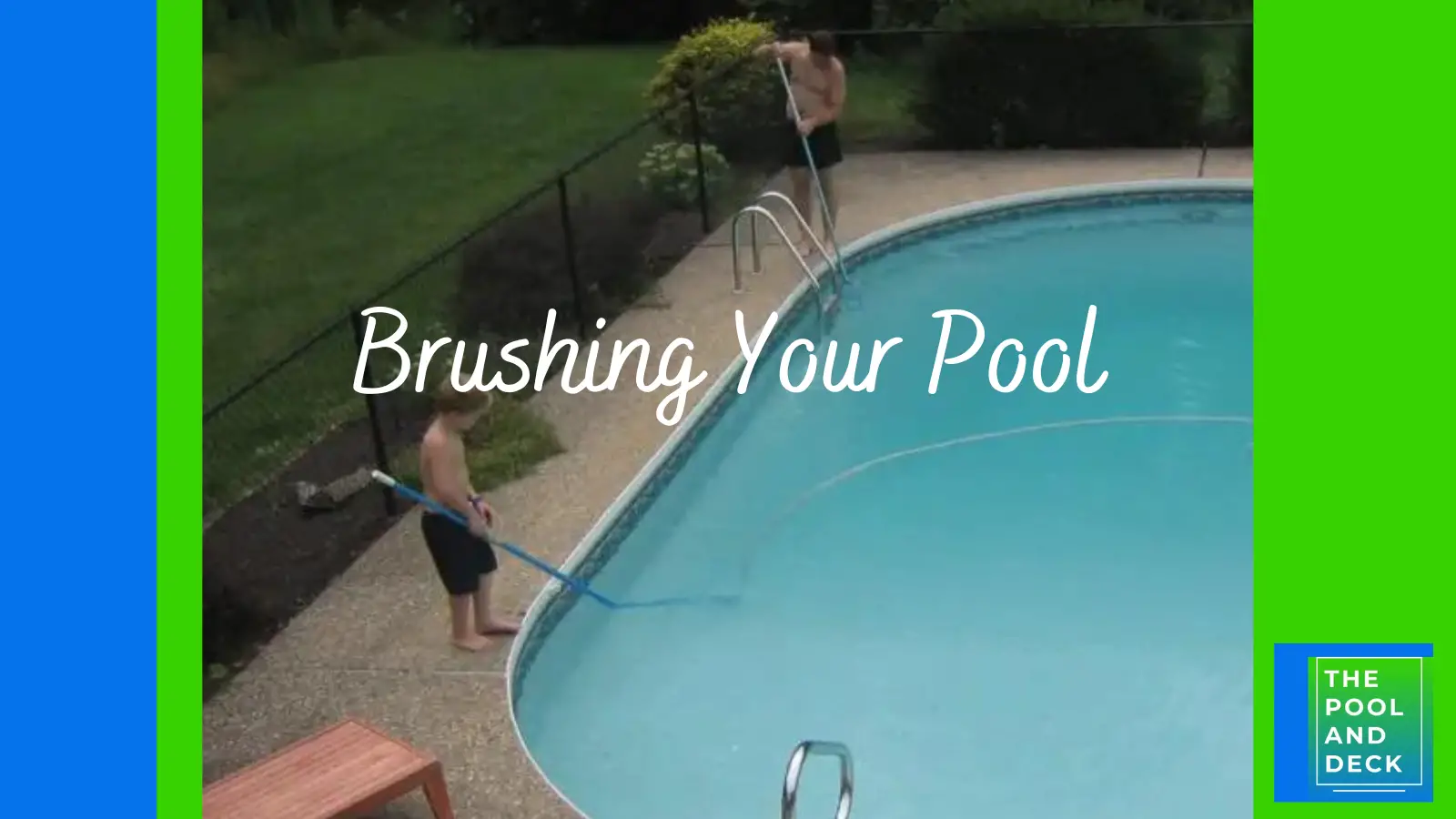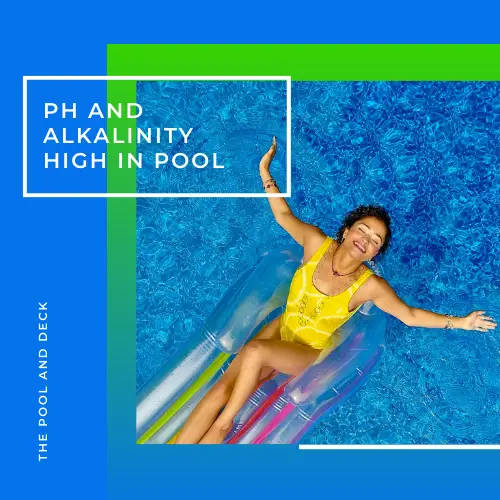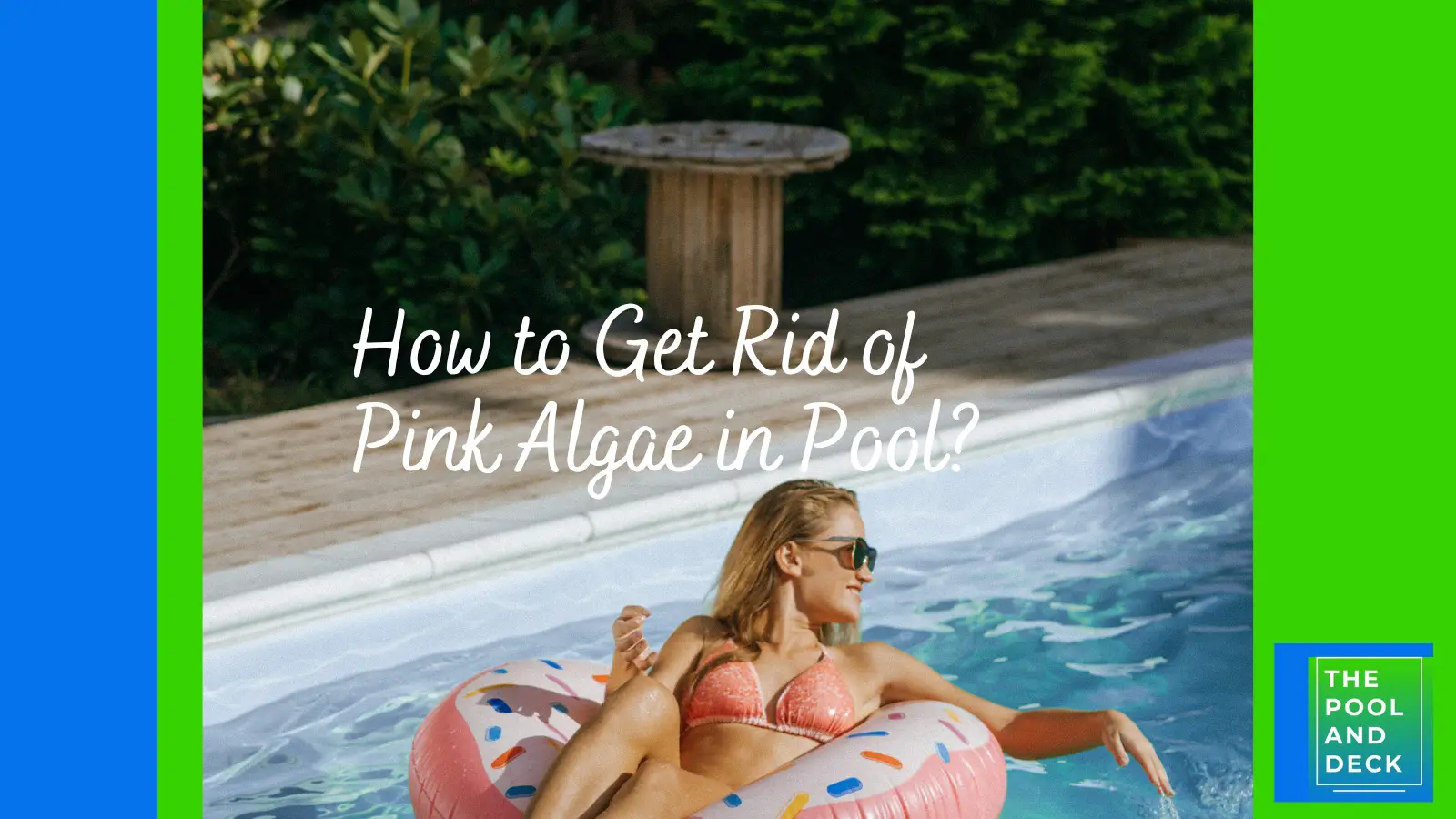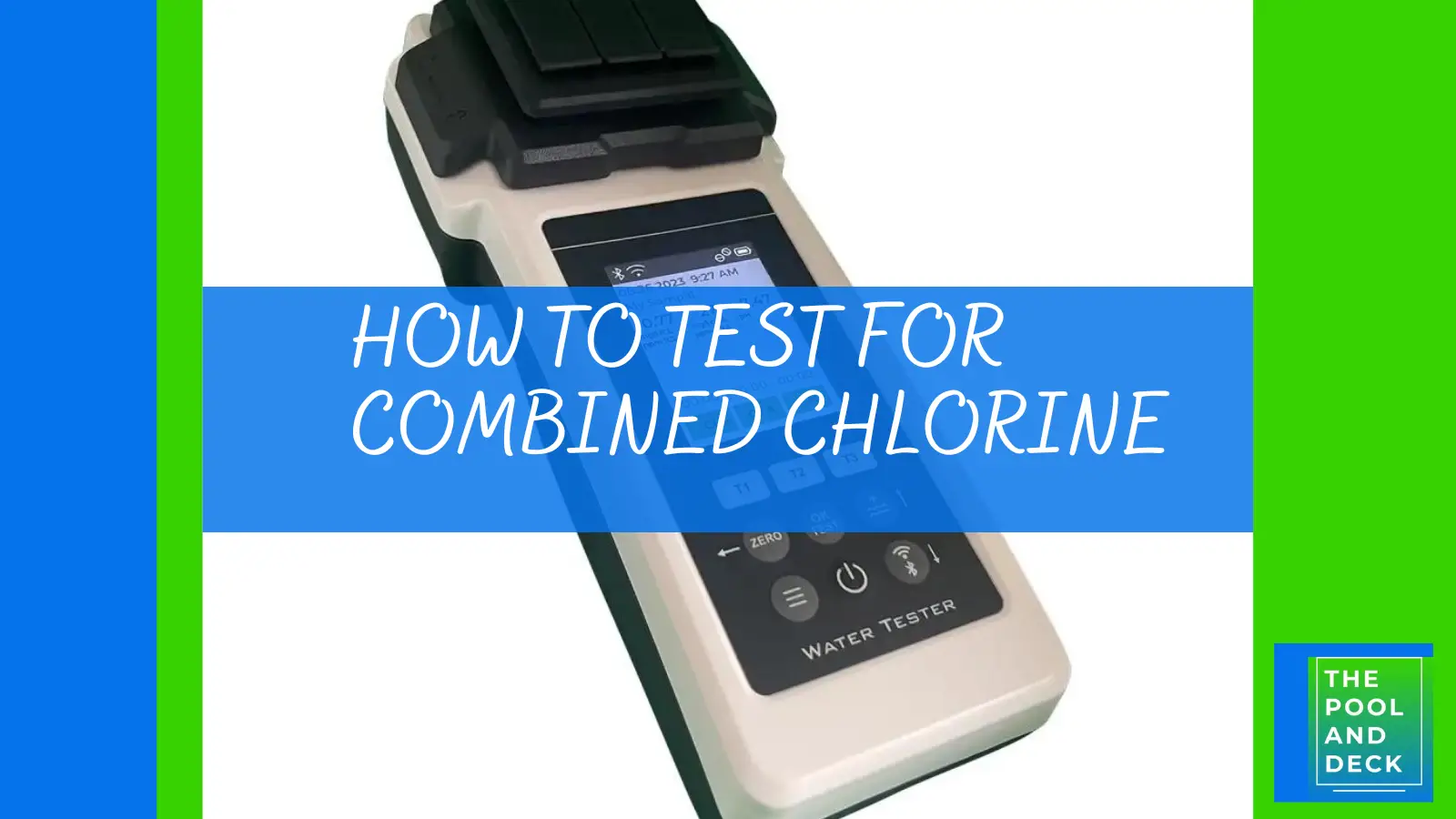When Is The Best Time To Add Algaecide To Your Pool? (Helpful!)
thepoolanddeck.com is a participant in the Amazon Services LLC Associates Program, an affiliate advertising program designed to provide a means for sites to earn advertising fees by advertising and linking to Amazon.com . The website is also an affiliate of a few other brands. The affiliate links never increase your purchase price. We do appreciate your support. Thank you very much!
Table of Contents
When Should I add Algaecide to my Pool?
The role of Algaecide in maintaining a healthy and clear swimming pool is often misunderstood. Algaecide is not the “primary” algae killer; Chlorine is. However, Algaecide prevents the growth of algae. If the Algaecide is doing its job well, Chlorine will need to make less of an effort. But then, “When is the best time to add Algaecide to your Pool?”
Algaecide is primarily a “preventive” swimming pool chemical. It should be added
- Regularly, every week.
- After “shocking” the pool and once Free Chlorine (FC) is 5 ppm or lower.
- Before heavy rains, when possible.
- Before Pool closure
- After Pool opening
- Whenever your pool looks cloudy
In this post I am going to explain what Algaecide does for your pool and the benefits of adding it to your pool at the times mentioned above.

What does Algaecide do for your Pool?
Algaecide is the swimming pool chemical that prevents the growth and proliferation of algae in your pool. Algae is the slimy green stuff that you see clinging to your pool ladder, pool steps and the pool floor. It is the stuff that makes your pool cloudy.
If you are unfortunate and experience “algae bloom” then your pool will turn completely green overnight.
But there is more to algae and Algaecide than this.
What Kind of Algae Do I Have in My Pool?
Algae are extremely small living organisms. Algae are not bacteria or from the animal kingdom. Algae are extremely small aquatic plants, capable of photosynthesis. Algae reproduce using spores. Algae spores are in the atmosphere all the time. They move around with the wind currents.
We think of algae as being green but all algae are not green. There are 3 types of algae that are commonly found in swimming pools.
Green Algae
Green Algae is the most common and that is why you always think of algae being green. It will generally attach itself to pool ladders, steps and the pool bottom. Sometimes it will just float around in the water and give your pool a green cloudy tinge.
Yellow Algae
Yellow Algae (aka Mustard Algae) is a variation of the green algae. It usually floats on the surface in the shady areas of the pool. It is relatively easy to clear it by vigorous brushing.
Black Algae
Black Algae is the worst of the lot. By the time it becomes visible, it would have already established roots in the porous surface of the pool. The roots can run deep, right into the pool concrete. They are tough to get rid of.
What Types of Algaecide are There?
Algaecide is a swimming pool chemical that weakens the algae making it easier for chlorine to kill them. Algaecide may act by disrupting energy transport, cell division, or the cell membranes of the algae.
Three types of Algaecides can be used in swimming pools. Each type of Algaecide is a different chemical. These are:
Quaternary (Quats)
Quaternary Algaecides are Ammonium compounds. They come in liquid form and should be poured around the perimeter of the pool. They are great for preventing algae growth but not very effective at killing them on their own. Can cause foaming.
PolyQuats
Polyquat Algaecides are polymeric quaternary ammonium compounds. They also come in liquid form and should be poured around the perimeter. They are more suited to killing rather than prevention of algae.
Polyquats last longer so you have to use them less often. They also do not cause foaming. But they do cost a lot more!
Copper-based
Copper-based Algaecides contain copper ions. Like the others, they also come in liquid form and should be poured around the perimeter. They also come in a solid mineral version which should be added to your skimmer.
They are good for both prevention and killing of algae. If you have black algae then you need to use a copper based algaecide. But it does have a few cons including turning blonde hair green.
In a nutshell, Algaecides prevent growth of algae and make them weaker so that the chlorine or other sanitizers can easily kill them.
The Best Times & Benefits of Adding Algaecide
Algaecide helps prevent the growth of algae in your pool and will also kill some of them. Algaecide works along with chlorine to keep your pool crystal clear and algae free.
Regular Weekly Addition of Algaecide
Make it a practice to add Algaecide regularly, every week, to your pool. You might want to do it every Thursday afternoon for example, so that your pool is ready for all the fun you and your family want to have over the weekend.
Algaecide will be there even if the chlorine gets depleted faster than expected due to unusually sunny weekend.
Adding After Shocking the Pool
Shocking the pool is a good way to get rid of algae fast. It is the only way if the algae growth in your pool has gone out of control.
Algaecide should be added once the “shock” process has been completed and the free chlorine (FC) levels in your pool are down to 5 ppm.
The Algaecide will work as a backup support to the chlorine and keep the algae at bay.
Before Heavy Rain and Storms
Add Algaecide to your pool if you see a big rainstorm coming. Try to do it at least 24 hours before the storm is expected to hit.
The rain will certainly dump a lot of algae spores and phosphates (nutrients for algae) in your pool. The storm will blow leaves & yard debris into your pool, another source of algae and algae nutrients.
Adding Algaecide will prepare your pool to handle the onslaught.
Add Algaecide Before Pool Closure
Before you close your pool for the off season, add Algaecide to it. You will have less algae growth to worry about when you reopen your pool in Spring.
The Algaecide will prevent the growth of algae in your pool during the cold, winter months.
Add Algaecide when you Open the Pool
Spring is here, days are getting warmer and you are eager to dive into your pool. Not so fast!
Check the health of your pool. If there is a high level of algae growth, you might want to shock your pool.
In any case you want to add some Algaecide, a day before you plan to use the pool.
Add Algaecide when your Pool Looks Cloudy
A cloudy green pool is an indicator that your pool may be in the early stages of algae growth. Nip the problem in its bud. Get to the algae before the algae gets to your pool.
In most cases addition of Algaecide to a cloudy green pool will help clear it. You should also check the free chlorine (FC) level and increase it a notch if it is low.
Think of Algaecide as a vitamin supplement. It will keep your pool healthy and algae free. It will not do you or your pool any harm as long as you use the right type & quality. Do not overdose on it though.
Recommended Swimming Pool Chemicals
Best Multi-purpose Pool Shock
Aqua chem Shock Xtra Blue is suitable for use in all types of pools, including salt water pools, above-ground pools and inground pools. It kills algae, bacteria, and chloramines, effectively and fast. It will make your pool crystal-clear blue and sparkling clean again. Order from Amazon using the link below:
Aqua Chem 5-Pack Shock Xtra Blue for Swimming Pools, 5 Pounds
Best All Purpose Algaecide
Kem-Tek Pool & Spa Concentrated Algaecide is very effective for prevention of algae and also helps to clarify cloudy pool water. It has a non-foaming formula and can be used in all types of pools. Order from Amazon using the link below:
Kem-Tek Pool and Spa 60-Percent Concentrated Algaecide, 1 Quart 2 Pack
Best Pool Clarifier
Clorox Pool&Spa Crazy Clarifier has a powerful formula. The Clarifier combines small contaminants in your pool into larger ones, so your filter can take them out. Clorox Pool&Spa Crazy Clarifier restores cloudy pools to a crystal clear, blue, beautiful look. Order from Amazon using the link below:
Clorox Pool&Spa Crazy Clarifier
Best Pool Flocculant
The HTH Drop Out Flocculant clears a dull, cloudy pool overnight. Flocculants cause unfilterable particles to settle to the bottom of the pool for easy removal. Use HTH Drop Out Flocculant in the evening and quickly vacuum away debris the next morning. Order from Amazon using the link below:
HTH 67029 Drop Out Flocculant Swimming Pool Cleaner
Thank you very much for reading the post. I do hope you found it informative and helpful.

